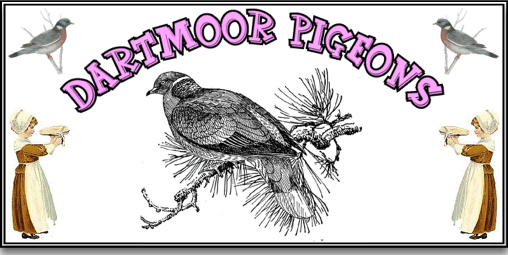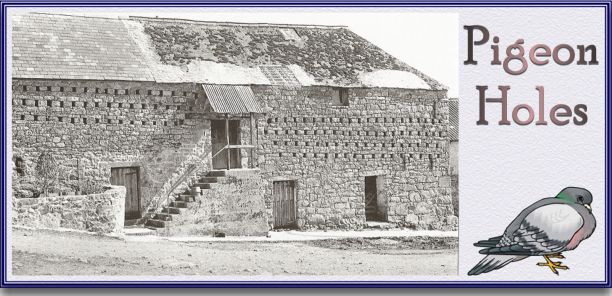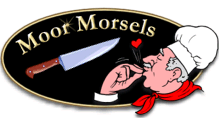
For many centuries domestic pigeons were kept in specially built houses variously known as dovecotes, pigeon houses, columbaria and culver houses (from the Anglo Saxon culver = pigeon). They were primarily kept for their meat but pigeon blood was, according to Pliny, meant to cure bloodshot eyes and the dried and powdered lining of their stomachs was an internal cure for ‘dysenteries‘. Another particular suspect cure was for gout and baldness and involved mixing pigeon dung with watercress. The dung collected from the pigeon house was used as an agricultural fertiliser and “one load was meant to be worth 10 loads of other dung. Pigeon feathers were used for stuffing pillows and feather beds, it was said that those who slept on pigeon feathers would live to a grand age.
From Norman through to Medieval times the keeping of pigeons was a privileged right and was restricted to barons, abbots and lords of the manor. This right was later extended to include the parish priest. There were harsh penalties dished out to anybody caught stealing or killing pigeons whether it was inside the pigeon house or outside in the fields. This was normally a bone of contention to the small farmers as the grain losses due to pigeon damage were immense. As late as the 1800’s this argument was still around and Parliament even considered introducing a ‘dovecote tax’. It is said that a pigeon can consume its own weight in food each day. At the end of the 16th century, Harrison comments that: “… pigeons, now an hurtfull foule by reason of their multitudes, and number of houses dailie erected for their increase whereof there is great plenty in everie farmers yard.”
There are records from Tavistock Abbey showing the sale of a pair of pigeons for 1d. In 1356 records again show that the Abbey dovecote at Werrington contained 149 birds. Other records for Dovecotes are for one in a meadow called Averne or Prior’s Mead in Tavistock. This was assigned to the prior who leased it out in 1477 at 3s. 4d a year.
Strangely enough there is no known record of a dovecote occurring on Dartmoor. One or two of the farms have barn walls where the bricks have been removed to allow the pigeons to nest but no specific cotes. The largest one having around 150 pigeon holes.

For the poorer people one way of obtaining ‘squab’ or young pigeon was to find a wild pigeon’s nest and wait until the eggs have hatched. Then tie a piece of thin cord around a nestlings leg and fix it to a branch near the nest. This meant that the bird could never fly the nest which also meant that the parent bird would continue to feed it. This way the young bird grew fatter and fatter until it became of a suitable size for squab pie and then it was simply untied, dispatched and cooked. This method was as good as having a dovecote.

So if you fancy cooking a traditional squab pie here is the recipe:
Dartmoor Squab Pie
Ingredients
1lb/450gms cooking apples (Devonshire if possible)
2 x medium sized onions
1lb/450gms squab or young pigeon meat
¼ pint/125ml dry cider (Devonshire if possible)
1 tsp cinnamon
salt and pepper
12oz/375gms shortcrust pastry
Method
Peel, core and dice the apples. Finely chop the onions. Cover the base of a pie dish with half of the apples and onions. Place the squab meat on top. season with salt and pepper and sprinkle the cinnamon on top. Top with the remaining apple and onion. Pour the cider over the layers.
Roll out the pastry and make a lid just bigger than the dish. Lay the lid over the dish and crimp the edges (clockwise for a cock squab pie and anticlockwise for a hen squab pie) Brush lid with milk and place in a preheated oven at 200ºC/400ºF/Gas Mark 6 for 30 minutes. Then turn the temperature down to 160º/325º/Gas Mark 3 and cook for a further 40 minutes or until the pie is golden. Serve with root vegetables and creamed/mustard mash potatoes. Accompany with more dry cider or a nice merlot.
(Should you be a bit squeamish about the baby pigeon you can replace it with sliced neck fillet of lamb but then ‘tent zo gud’.)
If you have difficulty in getting the squab Heal Farm sell it for about £8/350gms
 Legendary Dartmoor The many aspects past and present of Dartmoor
Legendary Dartmoor The many aspects past and present of Dartmoor
